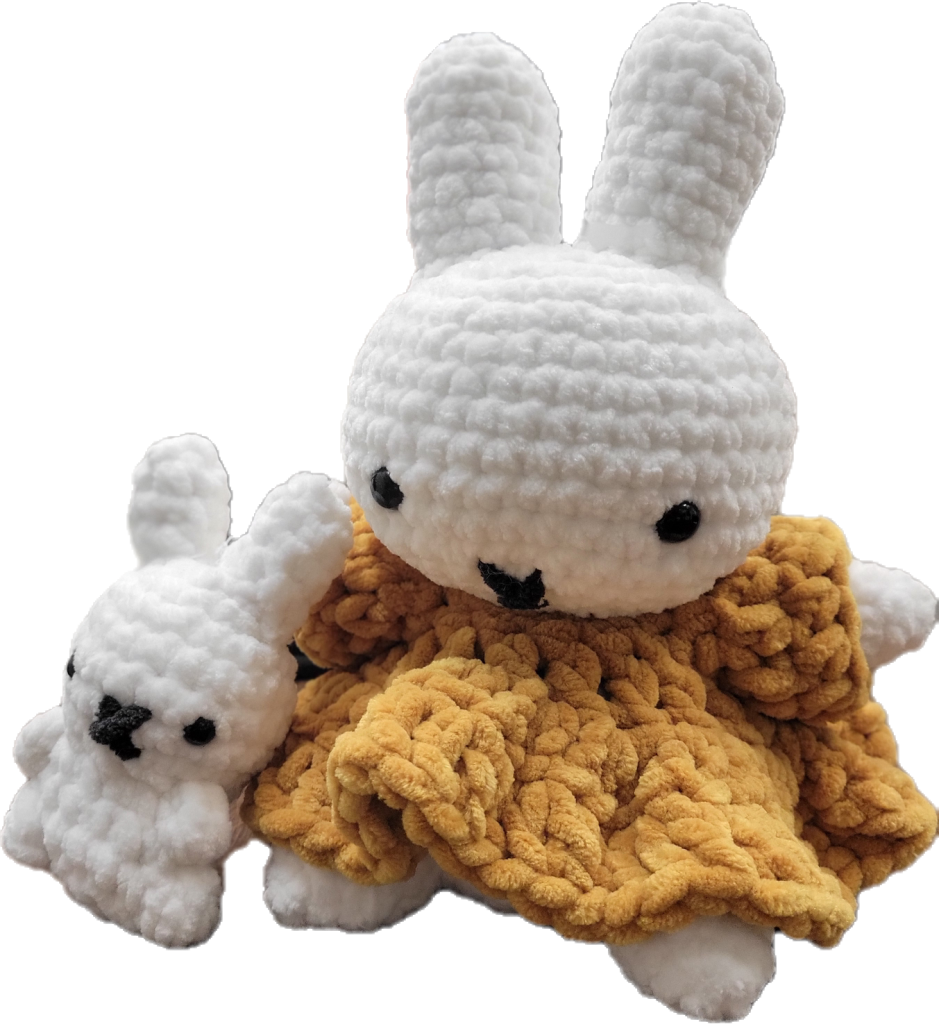Kylie
就像钩针编织需要专注、耐心与创意,我们的生命也在上帝的手中被细细雕琢。
Just as crochet requires focus, patience, and creativity, our lives are carefully shaped in the hands of God.
For our 2024 Christmas toy drive, I decided that instead of buying toys, I would crochet them. I’ve knitted plenty of scarves and potholders in the past, but I never bothered to properly learn crochet until recently. Compared to the mindless repeating pattern of a scarf, the patterns for making a 3D penguin or frog require much more careful counting. I can’t as easily crochet one while watching a show or movie. Still, the joy of a cute little animal made of yarn, just in its existence, makes it all worth it.
Unlike knitting, crochet cannot be done by machine. Though the aesthetic can be approximated, the real thing requires human hands. I could say the same about creative arts in general. In the past few years, image-generation neural networks have advanced to the point of making false pictures that look almost entirely real, and a new type of “AI artist” has learned to leverage this technology to generate almost any image they want. They hone the wording of their prompts, perhaps with rounds of refinement to adjust certain aspects of the image. Usually, such “art” ends up one of two ways: either it has bizarre flaws such as too many fingers on one hand and too few on the other—or it is so perfect, shiny, and idealized that it gives a creepy, uncanny-valley effect. On the surface, it looks very similar to art; on a deeper level, its generation came from a machine that simply does not understand how hands are supposed to work.
Artists who don’t outsource to machine learning algorithms argue that human-made art is set apart by the intention put into it. Someone who has studied light and shadow can choose where to set the light source for a painting. Then they add in the shadows and highlights, perhaps also the scattering or bounce lights, accordingly. A crochet pattern made by a person can easily count that doubling every stitch in a row of 6 stitches will lead to 12 stitches in the next row. They might also intentionally shift the spacing of increases in the next rows to help maintain even roundness. It might take a long time to make something. Or if it’s quick, years of practice have carved the muscle memory that looks effortless. There’s thoughtfulness, passion, even love. It’s harder to feel unlovable when someone gifts you a little toy animal in which every choice, every stitch, was made with care.
This love within human creativity, like all love, reflects our Creator. He spoke the world into existence starting from “Let there be light.” He called it “good” and humans “very good.” Psalm 139:13–14 says—
“For you formed my inward parts;
you knitted me together in my mother’s womb.
I praise you, for I am fearfully and wonderfully made.
Wonderful are your works;
my soul knows it very well.”
I recently had a talk with a friend who reminded me that God is Creator, and His creation is beautiful. It follows that if we are His creation, we are also beautiful. In truth, I still struggle to believe I am “fearfully and wonderfully made.” So often I feel broken, either internally or by outside circumstances, and I cry out to God to ask why. What was the intention behind the trauma, the stress, the heartbreak? If I am a work in progress, still being made “perfect and complete” by “trials of various kinds” (James 1:2–4), is that work truly being done with care and love?
It must be. If I love “because He first loved us” (1 John 4:19) and that love drove me to crochet a stuffed rabbit wearing a little dress to gift to a child I have never met—what if love drives God to make me, continuously, to love others in need? Or even to generate joy via my simple existence? It still boggles my mind that I mean something to the Creator of the universe, imperfect as I am, and yet the prophet Zephaniah has said—
“he will rejoice over you with gladness;
he will quiet you by his love;
he will exult over you with loud singing.”
以下为中文翻译:
为了我们2024年的圣诞玩具募捐活动,我决定不买玩具,而是自己钩织。我以前织过很多围巾和隔热垫,但直到最近才开始认真学习钩织。相较于围巾那种漫无目的的重复图案,制作3D企鹅或青蛙的图案需要更仔细的计算。我可没那么容易一边看电视剧或电影一边钩织。不过,光是看到一只用毛线织成的可爱小动物,就足以让我感到欣喜,这一切都值得了。
与针织不同,钩针编织无法由机器完成。虽然其美感可以近似,但真正的钩针编织需要人手来完成。对于创意艺术,我的看法大致是如此。过去几年,神经网路生成的图像已经发展到能够制作出几乎完全逼真的程度,而新一代的「人工智慧艺术家」已经学会了利用这项技术产生几乎任何他们想要的图像。他们会不断完善Prompt,甚至可能经过多轮的改进来调整影像的某些方面。通常,这样的「艺术」最终会以两种方式呈现:要么存在一些怪异的缺陷,比如一只手的手指太多,另一只手的手指太少;要么完美无瑕、光鲜亮丽、理想化,以至于营造出一种令人毛骨悚然的恐怖谷效应。表面上,它看起来与艺术作品非常相似;但从更深层次来看,它的生成者是一台根本不理解双手如何运作的机器。
不依赖机器学习演算法的艺术家认为,人类创作的艺术之所以与众不同,是因为它倾注了心血。研究过光影的人可以选择绘画的光源位置,然后添加阴影和高光,或许也会相应地添加散射光或反射光。人工编织的钩针图案很容易就能算出,一行6针,每针加倍,下一行就会变成12针。他们也可能故意调整下一行加针的间距,以保持均匀的圆度。一件作品可能需要很长时间才能完成。如果创作很快,多年的练习也会让你形成肌肉记忆,让你觉得毫不费力。这其中蕴含着体贴、激情,甚至是爱。如果有人送你一个小玩具动物,而里面的每一个选择、每一针都经过精心设计,你就不会觉得不被爱。
人类创造力中的这种爱,就像所有爱一样,反映了我们的创造者。祂说:“要有光。”祂称光为“好的”,称人类为“甚好”。诗篇139:13-14说——
「13我的肺腑是你所造的;
我在母腹中,你已覆庇我。
14我要称谢你,因我受造,奇妙可畏;
你的作为奇妙,这是我心深知道的。 」
最近我和一位朋友聊天,他提醒我,上帝是创造者,祂的创造是美丽的。因此,如果我们是祂的创造物,我们也是美丽的。说实话,我仍然难以相信自己是「受造奇妙可畏」的。我常常感到心碎,无论是内在的还是外在的环境,我都会向上帝呼求,问祂为什么。这些创伤、压力和心碎背后的目的又是什么?如果我还在不断进步,仍在通过“百般试炼”(雅各书1:2-4)来“成全、完备”,那么,这项工作真的充满关怀和爱吗?
一定是这样的。如果我爱「因为神先爱我们」(约翰一书4:19),而这份爱驱使我钩织了一只穿着小裙子的毛绒兔子,送给一个我从未谋面的孩子——如果爱驱使上帝创造我,不断地去爱那些需要帮助的人?甚至让我透过我简单的存在就能获得快乐?我仍然无法理解,尽管我并不完美,但我对宇宙的创造者来说仍然意味着什么,然而先知西番雅却说过——
「他在你中间必因你欢欣喜乐,
默然爱你,且因你喜乐而欢呼。」
读完有感想?请反馈给[email protected]!



